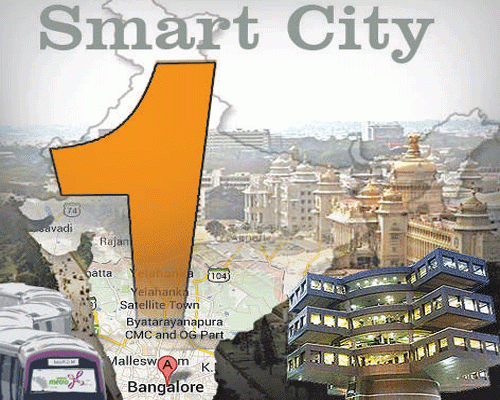Area analysis of all the corners of Bangalore.
Read latest blogs and articles from Housystan

The Information mentioned here was last updated on:
14/12/2025Exploring the Corners of Bangalore: A Detailed Area Analysis
Bangalore, often referred to as the Silicon Valley of India, is a vibrant city that blends tradition with modernity. Its sprawling landscapes are dotted with lush parks, historical monuments, and bustling markets. In this article, we will journey through the diverse neighborhoods of Bangalore, examining what makes each corner of this multifaceted city unique.
North Bangalore: A Blend of Growth and Tranquility
- Verified Tenants/Buyers
- Unlimited Property Listing
- Zero subscription/charges fee
North Bangalore is rapidly emerging as a key region due to its infrastructural developments and proximity to Kempegowda International Airport. This area is witnessing a boom in real estate and is becoming the preferred choice for new homebuyers and investors. Here’s what makes North Bangalore stand out:
- Yelahanka: Known for its serene environment, Yelahanka is rapidly developing with numerous residential projects. Once famous for its lakes and parks, it still retains much of its natural charm.
- Hebbal: Famous for the Hebbal Lake and well-planned infrastructure, Hebbal has developed into a prominent residential and commercial hub. With easy connectivity to other parts of the city via National Highway 44, it is an appealing location for IT professionals.
- Thanisandra: This area has seen a massive growth spurt with a plethora of new residential and commercial spaces due to its strategic location and proximity to the Manyata Tech Park.
South Bangalore: The Heart of Culture and Tradition
South Bangalore is recognized for its rich cultural heritage and lush green spaces, making it a highly desirable area for those seeking a balance of tradition and modern living.
- Jayanagar: Known for spacious parks and the famous Jayanagar Shopping Complex, this locality is a blend of historical charm and modern amenities. It's the perfect place for families looking for community-oriented neighborhoods.
- Basavanagudi: Home to beautifully preserved architecture, Basavanagudi offers glimpses into Bangalore’s legacy with sites like the Bull Temple. It is also known for its vibrant festivals and markets.
- Banashankari: As one of the largest localities, it offers excellent connectivity and a wide range of facilities, from premium educational institutions to healthcare centers.
East Bangalore: The Industrial and Residential Hub
East Bangalore has evolved significantly over the past few years, transforming from an industrial base to a residential haven with burgeoning IT parks.
- Whitefield: Originally established as an Anglo-Indian settlement, Whitefield is now synonymous with IT boom, thanks to the International Tech Park and various multinational companies. It’s a bustling neighborhood with a mix of shopping malls and greenery.
- KR Puram: Known for the iconic KR Puram Hanging Bridge, this area is a hot spot for residential developments, offering a mix of traditional and contemporary lifestyles.
- Marathahalli: This once quaint locality has surged as a prominent area for IT workers due to its strategic location. Marathahalli hosts numerous shopping malls and entertainment zones.
West Bangalore: A Blend of Old and New
West Bangalore is renowned for its industrial belt and traditional areas, which offer a glimpse into the old, yet rapidly growing metropolis.
- Rajajinagar: Characterized by planned layouts and well-established neighborhoods, Rajajinagar is a blend of commercial and residential zones with a community-centric vibe.
- Malleswaram: A traditional locality with a modern twist, Malleswaram boasts of wide tree-lined avenues and old temples, while also being close to the World Trade Centre.
- Nagarbhavi: With a quaint charm and developing infrastructure, Nagarbhavi offers a peaceful living experience with proximity to essential civic amenities.
Central Bangalore: The Bustling Core
Central Bangalore is the city's heartbeat, with its bustling streets, historic sites, and the perfect mixture of commercial and residential spaces.
- MG Road: Arguably the city’s most famous street, MG Road is lined with shops, restaurants, and offices. It serves as a major commercial hub.
- Brigade Road: Known for its vibrant atmosphere, Brigade Road is a shopper’s paradise, drawing locals and tourists alike to its lively markets and cafes.
- Shivajinagar: A lively neighborhood known for its wholesale and retail markets. It offers diverse shopping experiences with a range of traditional and modern stores.
Lingering Charm in Bangalore's Neighborhoods
Bangalore's corners reflect its diverse population and the city’s ability to integrate its history with rapid modernization. Each area, from the tech-driven zones of Whitefield to the cultural hubs like Jayanagar, offers distinctive experiences that cater to different lifestyles and preferences. Whether you’re considering moving to Bangalore or simply exploring its regions, understanding the characteristics of each area can offer invaluable insights into what to expect.
For further insights into living in Bangalore, you might explore the multifaceted dining scene which offers everything from traditional Kannadiga cuisine to global culinary delights. You can also delve into its increasing role as a start-up incubator with places like Koramangala becoming the cradle for innovation and entrepreneurship.
As the city continues to grow, each neighborhood presents new opportunities and challenges that contribute to the constantly evolving landscape of Bangalore, making it a city worth exploring in depth.